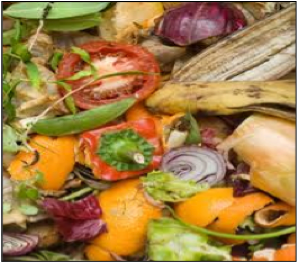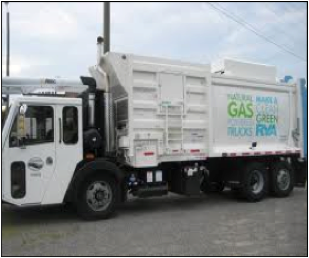Four weeks ago on June 3, 2013 I started my internship as a Research Assistant at Energy Vision (EV), a national non-profit organization in New York City.
EV was created in 2006 to analyze the issues surrounding the nation’s energy and transportation systems and to propose alternatives that do not degrade the health of the general public and environment. Specifically, EV focuses on the possibility of fueling the nation’s vehicle fleets from renewable natural gas (RNG) or biomethane, which is derived from decomposing organic material in anaerobic digesters (AD) or landfills. The carbon dioxide and methane captured from anaerobic digestion (the microbial breakdown of organic waste) can be used to generate electricity, heat, or can be further purified and converted into renewable compressed natural gas (R-CNG) to be used as vehicle fuel or injected into the gas grid. EV works with many political officials and corporations to promote RNG in addition to publishing reports, newsletters, and other documents to educate the general public on this topic. So far, there are already several projects across the US in California, Michigan, Ohio, Indiana, Wisconsin, and Louisiana that are taking advantage of this renewable vehicle fuel source.


EV also works on the larger issue of waste management, which is a major concern in New York City mainly because of population density; having a lot of people in a small place allows garbage to pile up…quickly. A popular solution to reduce the amount of garbage that is landfilled is to separate the organic material from the waste stream and compost it. This is a great method to reduce the amount of garbage being hauled to landfills or incinerators in addition to creating a fertilizer; however, composting can be smelly (depending on the size of your container) and it is only an effective strategy to reduce carbon dioxide emissions if done properly, which requires constant monitoring and rotation of compost piles. Anaerobic digestion provides added benefits in addition to the generation of organic soil/fertilizer because it also captures the energy value within these organic wastes in the form of electricity, heat, and vehicle fuel.
At EV, most of my days are spent researching the food truck and cart business and how this sector contributes to air pollution in NYC. This mainly includes scouring the literature for information on the lack of regulation of the carts’ and trucks’ diesel generator emissions (which exacerbate existing air pollution), reading current news articles, attending meetings, and most of all contacting relevant parties about current regulations (if there are any). The ultimate goal of this research is to switch this sector, which consists of approximately 5,000 food carts, 550 food trucks, 500 Mr. Softee trucks, and 200-300 Yogo trucks to CNG while continuously promoting the main goal of EV: using organic waste to generate R-CNG. The food truck and cart business, due to its size, would benefit from a swift transition to CNG and ultimately R-CNG; business owners would save money; and many harmful air pollutants associated with the burning of diesel and gasoline fuel such as PM 2.5 and NOx would be substantially reduced. Recently, I had a meeting with Max Crespo, the owner of Neapolitan Express – the first food truck in the country that is completely powered by CNG and serves fresh, delicious pizza. Max Crespo is definitely a leader in the food truck business, and he has partnered with Clean Energy to further the expansion of this movement towards “cleaner, greener, and cheaper” food trucks and carts across the nation.
The Neapolitan Express food truck is completely powered by CNG
I think the most valuable aspects of this internship will be synthesizing technical writing in a clear and concise way to attract more people to support Energy Vision’s interest in R-CNG as a vehicle fuel. I will also benefit from interacting with the many different interest groups involved with CNG and R-CNG, creating a line of communication with these groups, and working to maintain new and old relationships. This area of research definitely depends on the – RIGHT – connections you make and maintain because it is easy to be pushed aside and forgotten about since so much is already going on in NYC.
Thanks for reading my blog post and best of luck to my fellow Bard CEP/CSPers with your internship and thesis adventures!!




Danielle, very good insight from the first weeks of work. Always remember that no matter how good your research is, it doesn’t do any good if no one reads it.
Eban
Is the intention to switch the trucks themselves to CNG or the generators they use when preparing food?..or both?